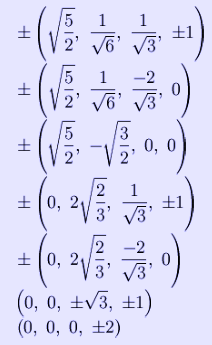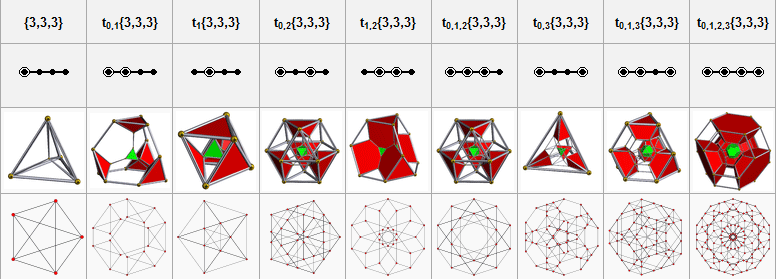In four dimensional geometry, the runcinated pentachoron is a 4-dimensional convex uniform polytope (or uniform polychoron) constructed by expanding the cells of a pentachoron radially and filling in the gaps with triangular prisms (which are the face prisms and edge figures) and tetrahedra (cells of the dual pentachoron). It consists of 10 tetrahedra and 20 triangular prisms. The 10 tetrahedra correspond with the cells of a pentachoron and its dual.
Coordinates The Cartesian coordinates of the vertices of an origin-centered runcinated pentachoron with edge length 2 are: An alternate simpler set of coordinates can be made in 5-space, as 20 permutations of: (0,1,1,1,2) This construction exists as one of 32 orthant facets of the runcinated pentacross. Cross-sections The maximal cross-section of the runcinated 5-cell with a 3-dimensional hyperplane is a cuboctahedron. This cross-section divides the runcinated 5-cell into two tetrahedral hypercupolas consisting of 5 tetrahedra and 10 triangular prisms each. Projections The tetrahedron-first orthographic projection of the runcinated pentachoron into 3-dimensional space has a cuboctahedral envelope. The structure of this projection is as follows: * The cuboctahedral envelope is divided internally as follows: * Four flattened tetrahedra join 4 of the triangular faces of the cuboctahedron to a central tetrahedron. These are the images of 5 of the tetrahedral cells. * The other half, the 'southern hemisphere', corresponds to an isomorphic division of the cuboctahedron in dual orientation, in which the central tetrahedron is dual to the one in the first half. The triangular faces of the cuboctahedron join the triangular prisms in one hemisphere to the flattened tetrahedra in the other hemisphere, and vice versa. Thus, the southern hemisphere contains another 5 tetrahedra and another 10 triangular prisms, making the total of 10 tetrahedra and 20 triangular prisms.
Alternative names * Runcinated 5-cell (Norman Johnson) Related uniform polychora The runcinated pentachoron is one of 9 uniform polychora constructed from the [3,3,3] Coxeter group.
Images: Robert Webb's Great Stella software Retrieved from "http://en.wikipedia.org/" |
|
||||||||||||||||||||||||||



